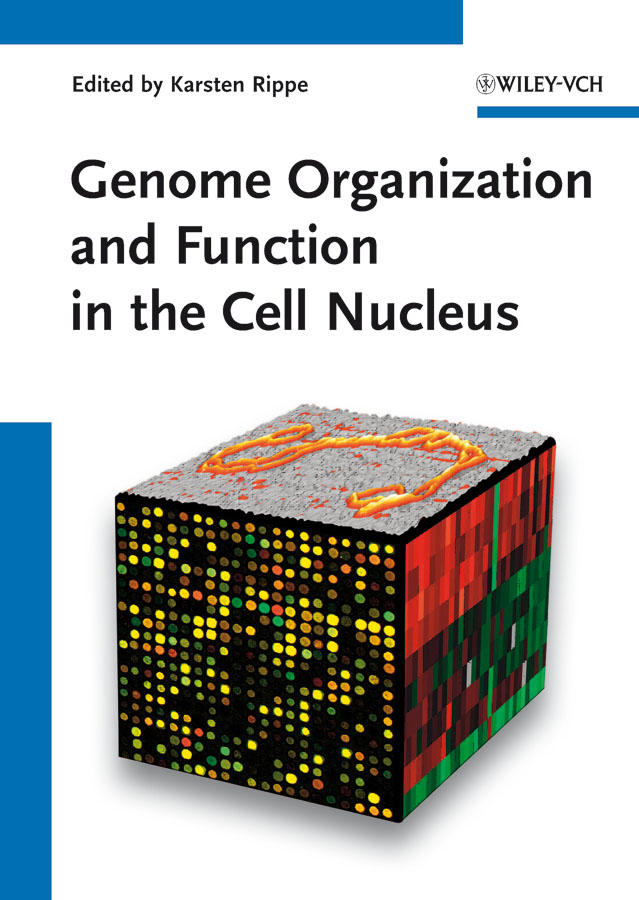
By way of its clear and logical structure, as well as abundant high-resolution illustrations, this is a systematic survey of the players and pathways that control genome function in the mammalian cell nucleus. As such, this handbook and reference ties together recently gained knowledge from a variety of scientific disciplines and approaches, dissecting all major genomic events: replication, recombination, repair, and transcription. A special emphasis is put on transcriptional control, including genome-wide interactions and non-coding RNAs,chromatin epigenetics and nuclear organization. With its focus on fundamentalmechanisms and the associated biomolecules, this will remain essential reading for years to come. INDICE: Preface xix List of Contributors xxi 1 Deciphering DNA Sequence Information 1 Mark Kaganovich and Michael Snyder 1.1 Introduction 1 1.2 Genes and Transcribed Regions 1 1.3 Non-Coding Genomic Elements 4 1.4 Regulatory Information 10 1.5 Individual Genetic Polymorphisms and Their Effect on Gene Expression 16 1.6 Conclusion 16 2 DNA Methylation 21 Carina Frauer, Fabio Spada, andHeinrich Leonhardt 2.1 Introduction 21 2.2 Eukaryotic DNA Methyltransferases 24 2.3 Distribution of 5-Methylcytosine in the Mammalian Genome 27 2.4 Controlof Gene Expression by DNA Methylation 31 2.5 DNA Demethylation 37 3 Nucleosomes as Control Elements for Accessing the Genome 55 Mekonnen Lemma Dechassa andKarolin Luger 3.1 Introduction and Basic Terminology 55 3.2 Nucleosomes are the Building Blocks of Chromatin 56 3.3 Nucleosomes Are Dynamic Macromolecular Assemblies 63 3.4 Histone Variants and Their Effect on Nucleosome Structure and Dynamics 66 3.5 Histone Modifications in Nucleosome and Chromatin Structure 68 3.6 DNA Sequence and Nucleosome Positioning 70 3.7 Histone Chaperones and Chromatin Dynamics 73 3.8 Outlook and Concluding Remarks 75 4 Histone Modifications and Their Role as Epigenetic Marks 89 Karl Nightingale 4.1 The Complexityof Histone Modifications 89 4.2 Regulating Histone Modifications in Chromatin93 4.3 The Histone Code Hypothesis 95 4.4 Exploiting the Complexity of the Histone Code: Crosstalk Between Different Modifications 98 4.5 Are Histone Modifications Heritable Epigenetic Marks? 104 4.6 Conclusions 106 5 Chromatin Remodeling and Nucleosome Positioning 111 Gernot La¨ngst, Vladimir B. Teif, and Karsten Rippe 5.1 Introduction 111 5.2 Chromatin Remodeling Complexes 112 5.3 Mechanisms of Nucleosome Translocations 115 5.4 Positioning Nucleosomes in the Genome 118 5.5 Gene Regulation via Nucleosome Positioning 124 5.6 Conclusions 127 6 The Folding of the Nucleosome Chain 139 Karsten Rippe 6.1 Introduction 1396.2 Experimental Systems 140 6.3 NucleosomeNucleosome Interactions 142 6.4 DNA Interactions with the Histone Octamer Protein Core 145 6.5 Architectural Chromosomal Proteins and Chromatin States 147 6.6 Chromatin Fiber Conformations 150 6.7 Conclusions 154 7 The Crowded Environment of the Genome 169 Ron Hancock7.1 Introduction 169 7.2 Basics 169 7.3 Physicochemical Parameters of the Genomes Environment 171 7.4 Implications of a Crowded Environment for the Conformation of the Interphase Genome 171 7.5 Assembly and Localization of Macromolecular Machines for Genome Transcription and Replication 175 7.6 The Environmentof the Genome during Mitosis 177 7.7 Effects of a Crowded Environment on Searching for Targets in the Genome 178 7.8 The Relative Importance of Entropic and Ionic Interactions for the Conformations and Interactions of Macromolecules in the Nucleus 179 7.9 The Evolution of Genomes 180 8 The Nuclear Lamina as a Chromatin Organizer 185 Nikolaj Zuleger and Eric C. Schirmer 8.1 Introduction 185 8.2 Genome Organization with Respect to t
- ISBN: 978-3-527-32698-3
- Editorial: Wiley-VCH
- Encuadernacion: Cartoné
- Páginas: 594
- Fecha Publicación: 30/11/2011
- Nº Volúmenes: 1
- Idioma: Inglés
